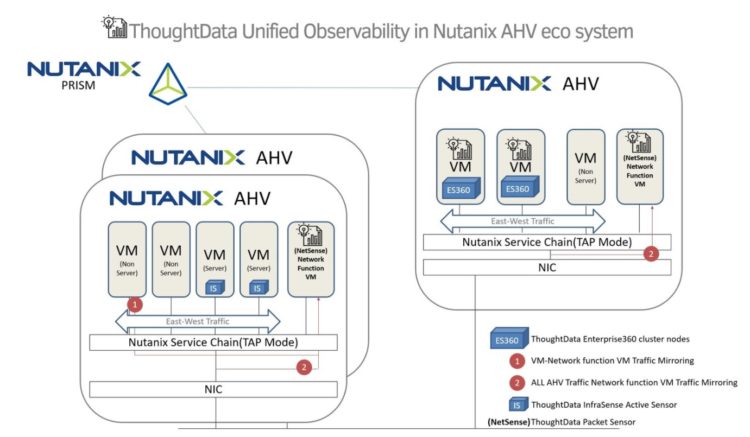
Unified observability in Nutanix AHV environments and Nutanix hyper converged infrastructure(HCI)
Unified observability in Nutanix AHV environments and Nutanix hyper converged infrastructure(HCI)
Hyper converged infrastructure (HCI) combines servers and storage into a distributed infrastructure platform with intelligent software to create flexible building blocks that replace legacy infrastructure consisting of separate servers, storage networks, and storage arrays. More specifically, it combines commodity datacenter server hardware with locally attached storage devices (spinning disk or flash) and is powered by a distributed software layer to eliminate common pain points associated with legacy infrastructure.
HCI converges the entire datacenter stack, including compute, storage, storage networking, and virtualization. Complex and expensive legacy infrastructure is replaced by a distributed platform running on industry-standard commodity servers that enables enterprises to size their workloads precisely and to scale flexibly as needed. Each server, also known as a node, includes x86 processors with SSDs and HDDs. Software running on each node distributes all operating functions across the cluster for superior performance and resilience
Nutanix services can be broken down into three main components: an HCI based distributed storage fabric, management and operational intelligence from Prism, and AHV virtualization. Nutanix Prism furnishes one-click infrastructure management for virtual environments running on AOS. AOS is hypervisor agnostic, supporting two third-party hypervisors—VMware ESXi and Microsoft Hyper-V—in addition to the native Nutanix hypervisor, AHV. With AHV, virtualization management is combined with the simplicity of HCI – Easily manage storage and virtualization all from Nutanix Prism
Business critical applications running over Nutanix HCI requires continuous observability into application and virtual infrastructure performance along with cyber threat intelligence. East-west activity between virtual workloads (servers, applications) which can run in VMs and/or containers are crucial for customers to gain critical insights into user experience and application and infrastructure performance. It made perfect sense for ThoughtData to extend and certify Enterprise360 unified observability platform in the Nutanix Ecosystem.
Unified observability is now possible in Nutanix AHV environments with ThoughtData’s Enterprise360 software and NetSense, InfraSense sensors fully qualified and certified in AHV environments.
Nutanix customers in need of critical east-west network traffic observability has several options to tap Subnet based or VM to VM or entire hypervisor traffic to ThoughtData NetSense virtual sensor working as a VM on same hypervisor using the network function chain configuration in the AHV. A sample deployment is illustrated below.
Simple steps to get ThoughtData unified observability working in Nutanix AHV environment
-
Setup a linux based VM on the Nutanix AHV using Prism, install ThoughtData Enteprrise360 software on the VM
-
Setup a linux based VM on the Nutanix AHV using Prism, install ThoughtData NetSense Packet Sensor
-
Follow instructions in “Configuring Service Chains and Network Functions guide in AHV”, Setup network function service chain in TAP mode on the Nutanix AHV hypervisor, Decide if you need a VM to VM traffic mirroring or Subnet based or entire AHV traffic visibility according to your monitoring requirements.
-
Attach the service chain to the NetSense VM, you should see a new virtual interface on the NetSense VM
-
Start the NetSense packet sensor on the service chain virtual interface and point NetSense to Enterprise360
-
You are now ready for Unified Observability in Nutanix AHV environment with full scale east-west traffic visibility
-
Replicate the same configuration in each AHV, you would need one NetSense VM per AHV, use AHV cloning options to replicate the NetSense VMs as needed across AHV cluster using Prism
-
Enterprise360 supports multi node cluster and Enterprise360 VMs can be spawned in any AHVs in the cluster and need not co-exist in same AHV as NetSense VM but both would need a network connectivity for communication
Contact ThoughtData technical support at info@thoughtdata.com to get a copy of Nutanix Service Chain and Network Function configuration guide
Unified observability is now possible in Nutanix HCI environments with ThoughtData Enterprise360 and Nutanix certified AHV integrated solution

